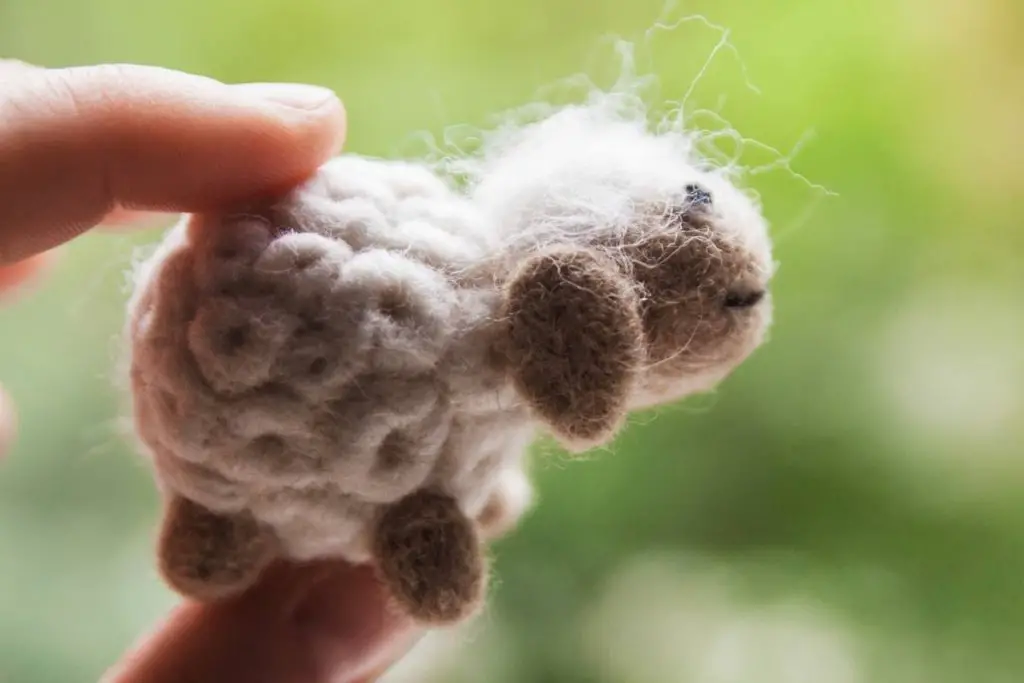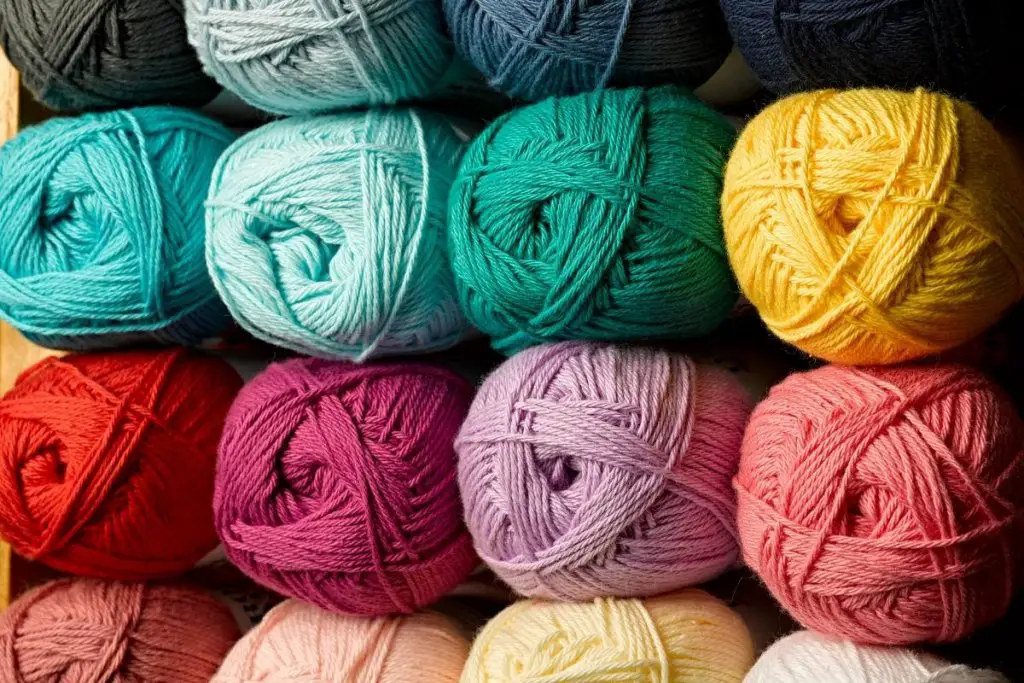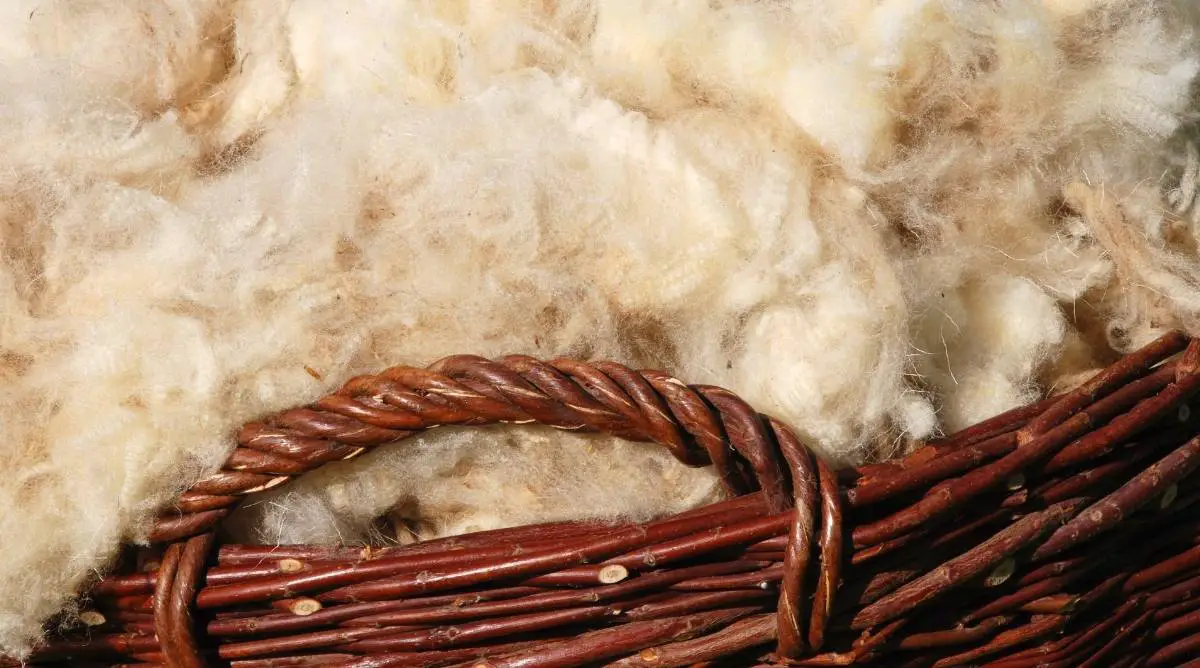Sheep wool is a versatile material commonly used for garments, bedding, and DIY crafts. Less common uses include insulation, carpets, mulch, and upholstery.
Table of Contents
7 Interesting Uses for Sheep Wool

- Insulation: Just like fiberglass, wool can be used for insulation due to its ability to heat up, stay warm, and regulate humidity. This is still a niche application for wool, as it’s more expensive than fiberglass.
- Hanging basket liners: Wool is biodegradable, so it’s an eco-friendly alternative to sphagnum moss, which is often used for lining hanging baskets.
- Carpets: Wool carpets are durable and can purify the air in your home for up to 30 years.
- Mulch: Sheep fleece is an excellent weed-suppressant.
- Simple crafts for kids: Yarn makes for fun, mess-free, and creative crafting ideas for children. Think DIY yarn friendship bracelets, pompoms, dolls, sticks, and letters.
- Upholstery: Thanks to modern technology, wool can be colored and treated to provide various texture options. Plus, it feels and looks luxurious.
- Gifts: Handmade gifts such as crocheted blankets, ribbed hats, and circular woven coasters are cute and unique gifts for your friends.
Common uses of sheep wool
Some of the more common uses of wool include:
- Scarves
- Sweaters
- Hats
- Bedding
- Blankets
- DIY crafts
- Other garments
How to make yarn out of sheep wool

Before you can use sheep wool for textile crafts, you need to process raw fleece and make yarn. Shearers typically skirt (trim) it using wool rollers to remove debris.
Here’s a list of five steps for turning raw wool into yarn:
- Scour (wash and rinse) the fleece to remove dirt, lanolin (natural grease), and vegetable matter.
- Sort raw wool into high and low-quality wool.
- Card (comb) it to untangle and align wool fibers. Ready-to-spin fibers are called roving.
- Dye into your colors of choice.
- Spin the dyed fibers to make yarn.
Best breeds of sheep for wool production
Merino sheep have the finest and softest wool, and it tends to go for the highest price.
Some other great breeds used for wool are:
- Debouillet sheep
- Comeback sheep
- Rambouillet sheep
- Cormo sheep
- Bluefaced Leicester sheep
Hair sheep breeds can’t be used for wool production, as they don’t grow wool. They have a hair coat and shed it naturally.
Can you make money selling sheep wool?
The market for sheep wool is large, and you can sell to anyone from small-scale hobbyists to large manufacturers.
Wool is classified by three parameters – quality, class, and grade.
- Wool quality depends on staple characteristics, fiber diameter, clean fleece yield, and other measurements.
- Wool class is the measurement of fiber or staple length.
- Wool grade equals wool fineness.
The better each of these parameters above are, the more you can earn.
US wool producers typically sell to wood mills or warehouses. If you’re just starting out, though, you can try your luck by selling raw fleece via wool pools (collection points for sorting, packaging, and selling wool).
There are a few ways to increase the wool you get from each sheep:
- Deworm your sheep to prevent external and internal parasites from decreasing the wool quality. Pay special attention to treating mature ewes to avoid lamb parasite exposure.
- Feed your sheep a balanced diet to increase the quantity and quality of wool.
- Maintain your flock’s overall health, as you may end up with weaker wool if the animals are sick.
Remember that certain breeds (Lincoln and Lincoln Cross sheep) can be sheared twice a year.
To produce the highest-quality wool possible, Merino sheep may be your best bet. Since Merino wool is valued the most on the wool market, you may be more profitable if you start with a flock of these sheep.

